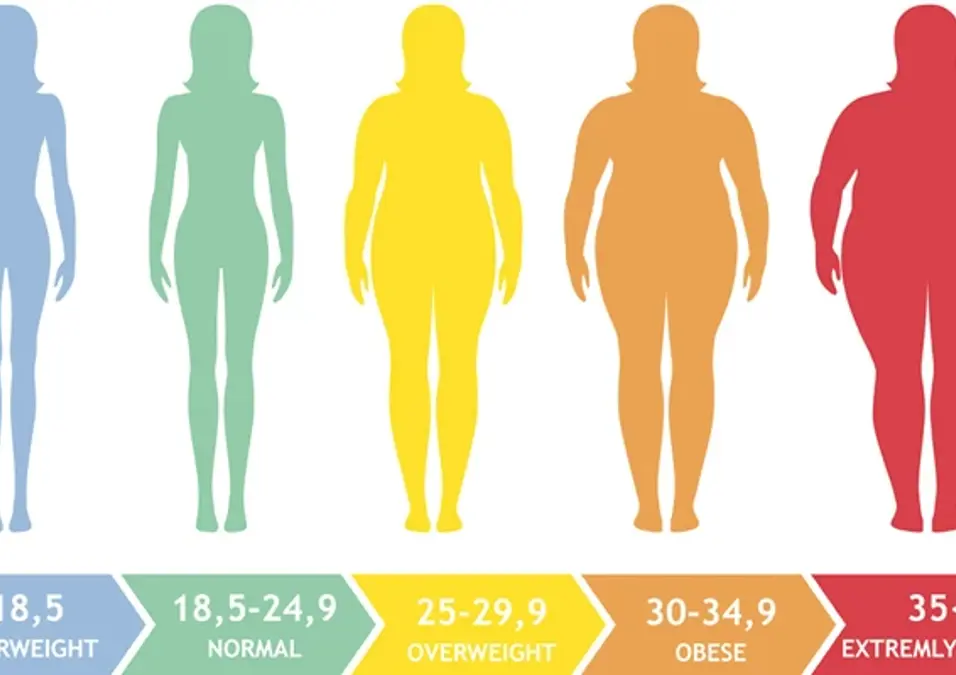The Benefits of Calculating BMI

SIGN UP FOR YOUR FREE DAY PASS TODAY!
The body mass index (BMI) is a measure that uses your height and weight to work out if you are a healthy size. This helps Gyms in Dubai to personally customise a workout and nutrition plan for you.
The formula used to work it out is super straight forward, easy to use and is incredibly useful. The BMI Calculator divides your weight in kilograms by your height in metres squared.
The resulting number, which is usually between about 15-40, is compared against the BMI chart.
This shows whether you are underweight, a healthy weight, overweight or obese.
However, it’s easier to simply use an online calculator, of which there are dozens.
But what are the benefits of knowing your BMI, and how do you use it?
Let’s begin by looking at BMI ranges and what they tell you- this is incredibly useful information, as you will see, and forms a cornerstone of many weight loss regimes.
BMI ranges
The healthy range for most people is a BMI of 18.5 to 24.9, though those with greater muscle mass may see themselves in a healthy weight range at a higher number.
The ranges measure in at:
below 18.5: underweight
between 18.5 and 24.9: healthy weight
between 25 and 29.9: overweight
between 30 and 39.9: obese
over 40: severely obese
It’s easy enough to find a rough estimate of your BMI using the formula below.
There are too many variables to take into account to be 100% accurate all the time, so actual amounts will vary according to person, but you can get a fairly decent measure of your weight level.
This brings us to the first benefit of BMI measurements: you get a reasonably accurate, very objective view of how healthy your weight is.
But there are far more benefits than this to be gained from using BMI.
Advantages of BMI
1. Knowing your BMI is useful for doctors
A patient’s BMI will be used by medics as a biometric marker with regards their overall health.
The likelihood of a patient developing chronic illnesses such as heart disease, anorexia or diabetes can hinge on having a healthy BMI.
It is therefore used to great effect as a diagnostic tool. In addition, the safety of certain procedures often depends on somebody’s BMI being within a healthy range, so surgeons will rely on it in assessing patients for treatment.
2. It will guide your health and fitness goals
It is also good for you to know your BMI when you’re thinking about setting yourself any health and fitness goals.
For example, if you find that you have a BMI of 15, you know that you have to put weight on in order to be considered healthy.
You will know that the best route for you to take would be to add a caloric surplus of around 3-500 calories per day to put on around 3-4lbs per month until you get your BMI into the healthy range.
On the other hand, if you find that your BMI is 34, for example, you will know that you are obese. Your priority will then be to lose weight.
A caloric surplus of 500-1000 per day, alongside a few weekly trips to the gym, will help you to lose between 4-10 pounds per month, until you come down to a healthier BMI range.
3. It is objective
BMI isn’t the most accurate measurement going.
It doesn’t take into account muscle mass, for example, or indeed any extra factors that may contribute to somebody having an abnormal weight. However, it is objective.
You can look in the mirror and fool yourself that you look healthy.
You can ask loved ones if you are over- or under-weight. A combination of a lack of expertise and their wanting to protect your feelings, they may say that everything is fine.
Your BMI won’t lie. It will tell you whether or not you’re a healthy weight, which should serve as a good wake up call to set some health and fitness priorities.
However, as it isn’t too accurate, BMI should only be one measurement used in determining somebody’s health. An overall, more holistic approach will be needed.
For example, waist, hip and chest measurements can be used.
If you’re BMI is 28 but you have a 32inch waist and a 42inch chest, you should probably realise that your extra mass is down to muscle.
If those measurements are reversed, you need to lose some body fat.
Consider your physical and mental health, as well as your fitness and myriad other health markers to help you decide the shape that you’re in. Just remember that if your BMI is outside a healthy range, there is likely more to your story than normal and you will need to explore it.
GET YOUR FREE TRIAL TODAY














































































